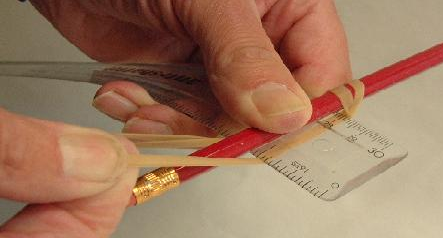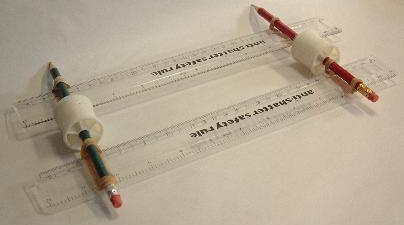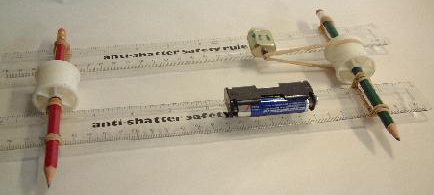Or search by topic
Number and algebra
Geometry and measure
Probability and statistics
Working mathematically
Advanced mathematics
For younger learners
Make Your Own Robot



- Project
- Teachers' Resources
What is a robot? Robotic devices are anything which we make to take over a job which is boring, repetitive or dangerous to humans. Start by doing a 'robot walk' round your classroom - what can you see which has been invented by humans to make life easier, quicker or safer?
You can make a simple robot from everyday materials.
Equipment needed:
- two pencils
- two rulers
- two cotton reels
- rubber bands
- one electric motor
- one battery holder
Making your robot
Stage 1: if you are using long rubber bands, double them up; if you are using small ones, use several.

Stage 2: the rubber bands need to provide a firm fixing, so they need to be tight.

Stage 3: use the rubber band fixing technique to construct a basic unit that looks like the one below.

Stage 4: attach the electric motor and battery holder with blu-tak or plasticene. The rubber drive band to the cotton reel needs to be only slightly tight.

Stage 5: when the electric motor is connected to the battery, the cotton reel should rotate. The basic unit can be made to imitate a robot buggy. It can also imitate the winding drum for a robotic lift, the drum of a washing machine, and lots of other robotic devices.
Stage 6: once you've got your robotic buggy going, see what you can find out about it. How far can it go? How fast can it go? If you make a few of them, you could race them!
Related Collections
You may also like
Troublesome Triangles
Many natural systems appear to be in equilibrium until suddenly a critical point is reached, setting up a mudslide or an avalanche or an earthquake. In this project, students will use a simple simulation game to investigate the properties of such systems.

